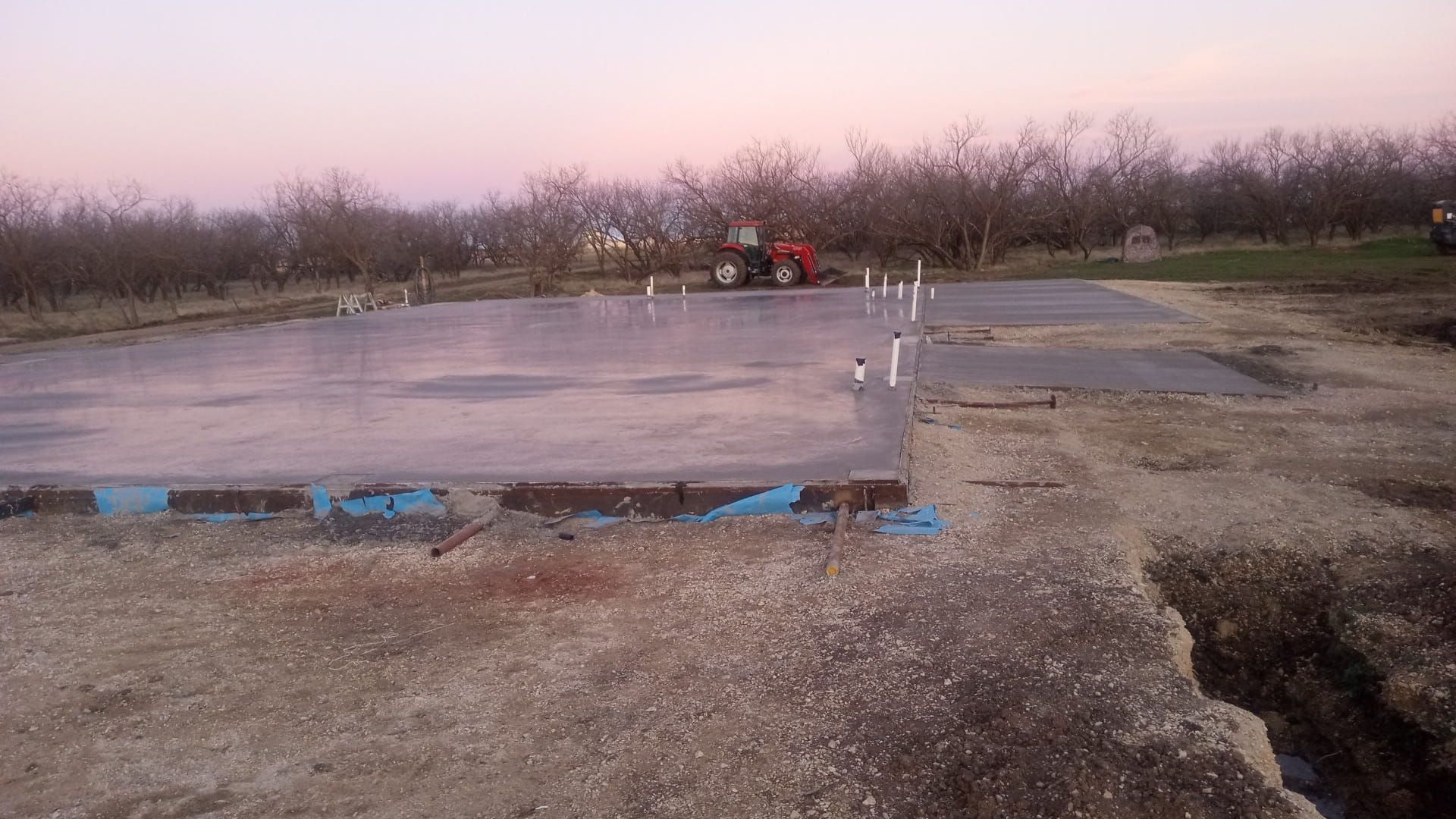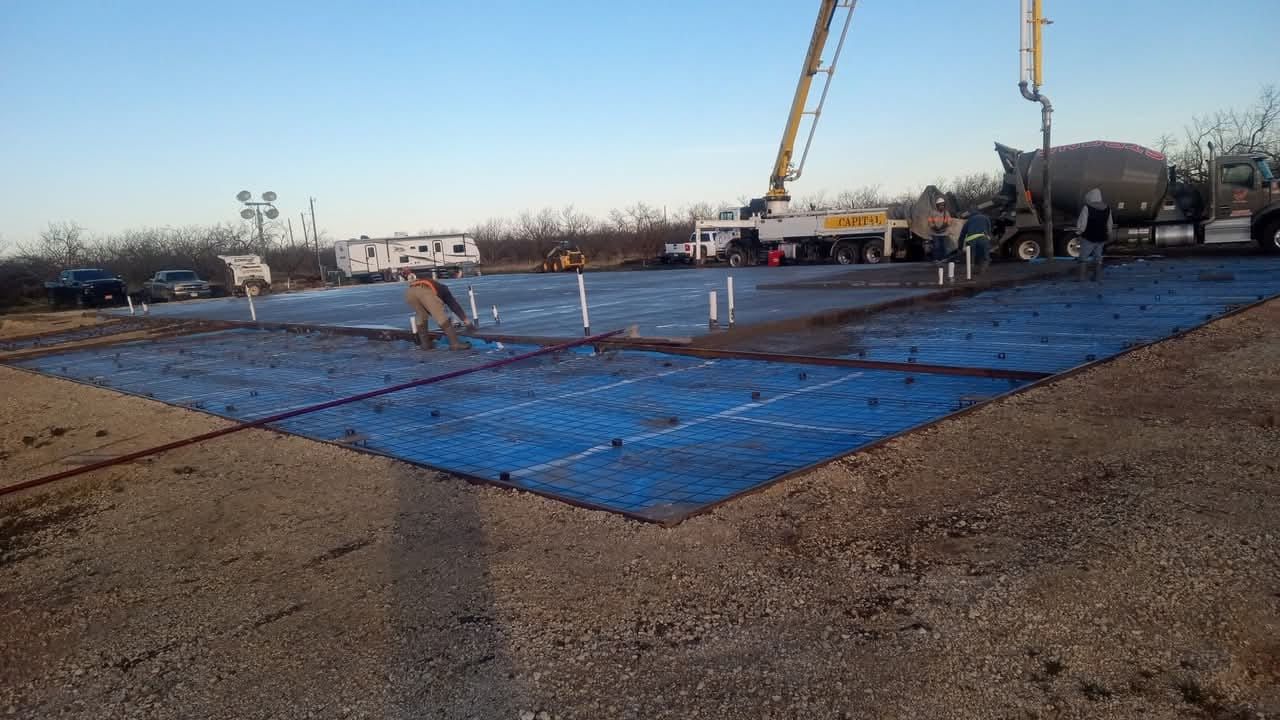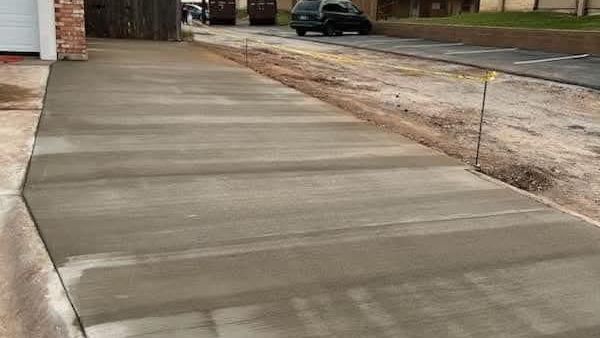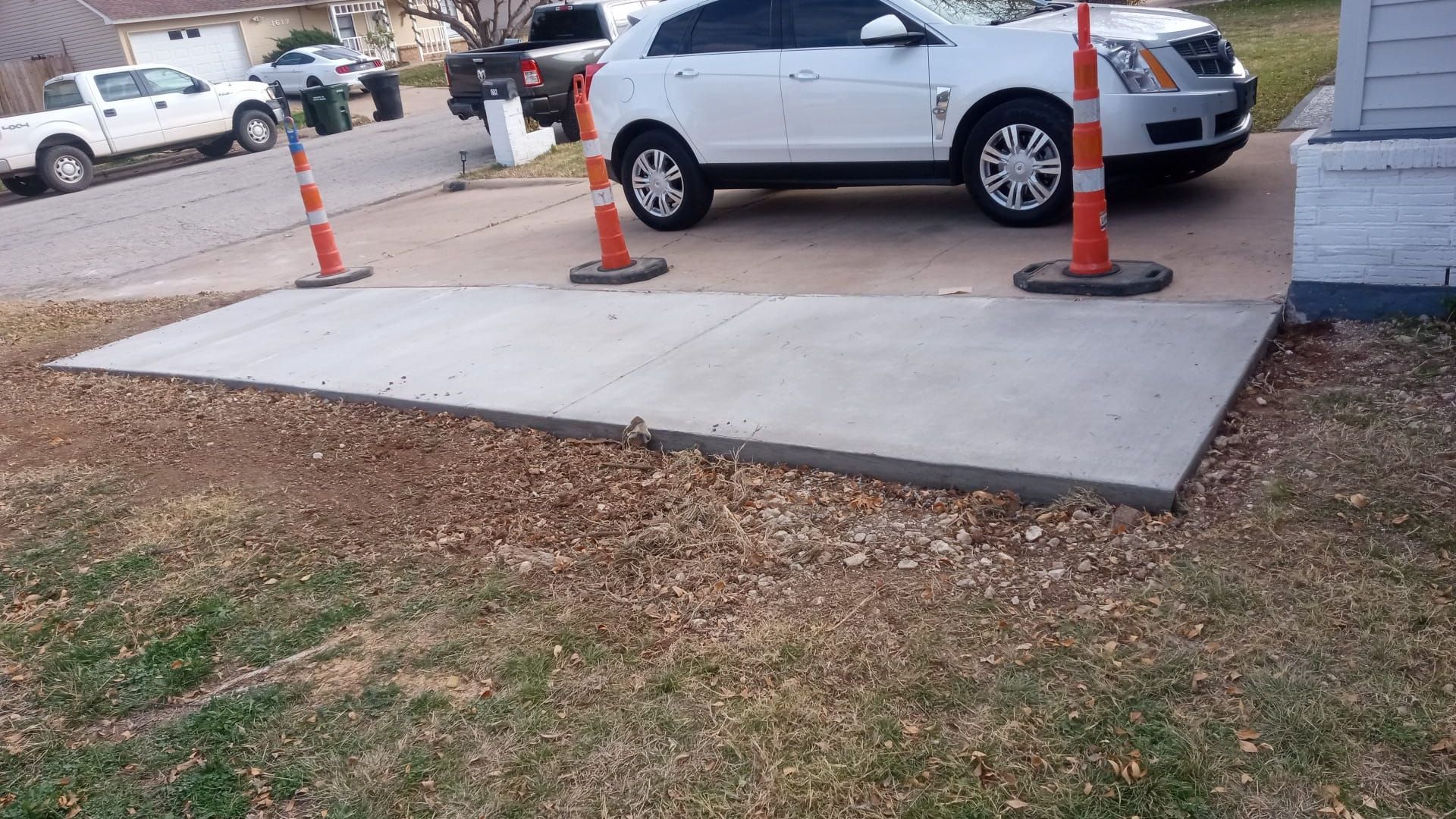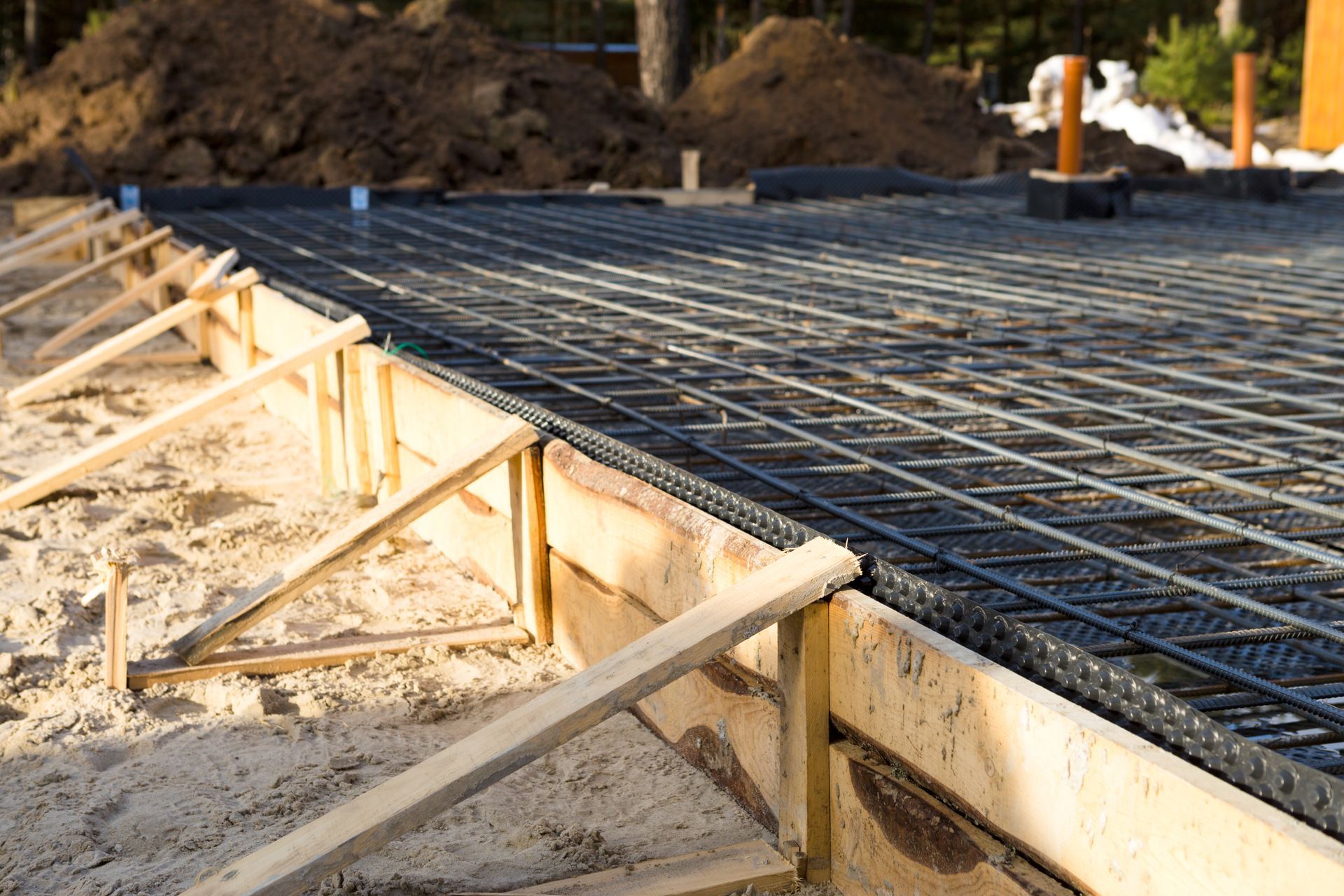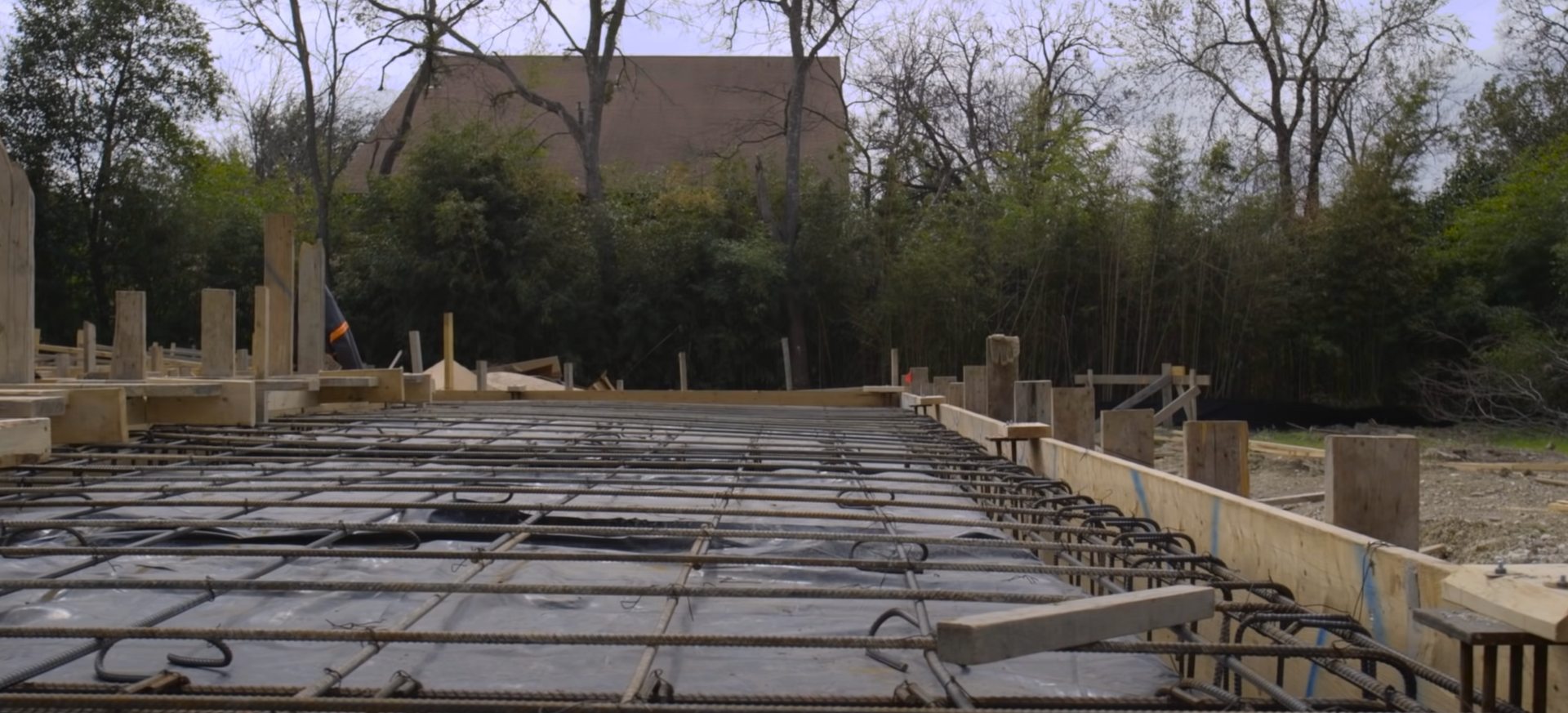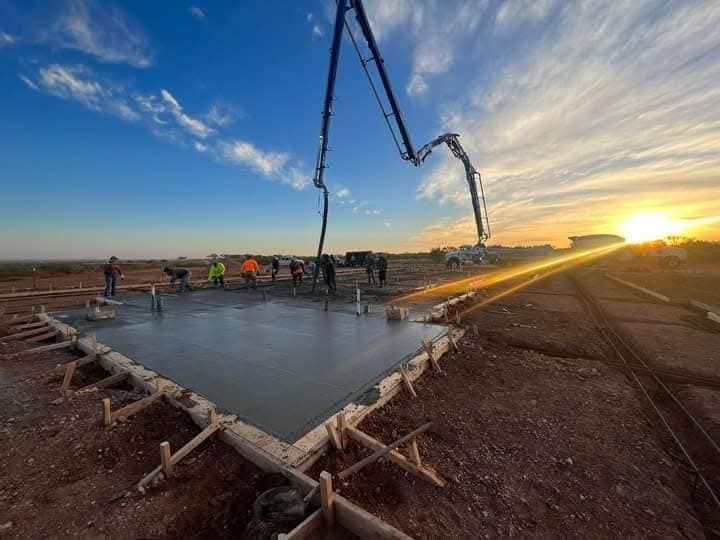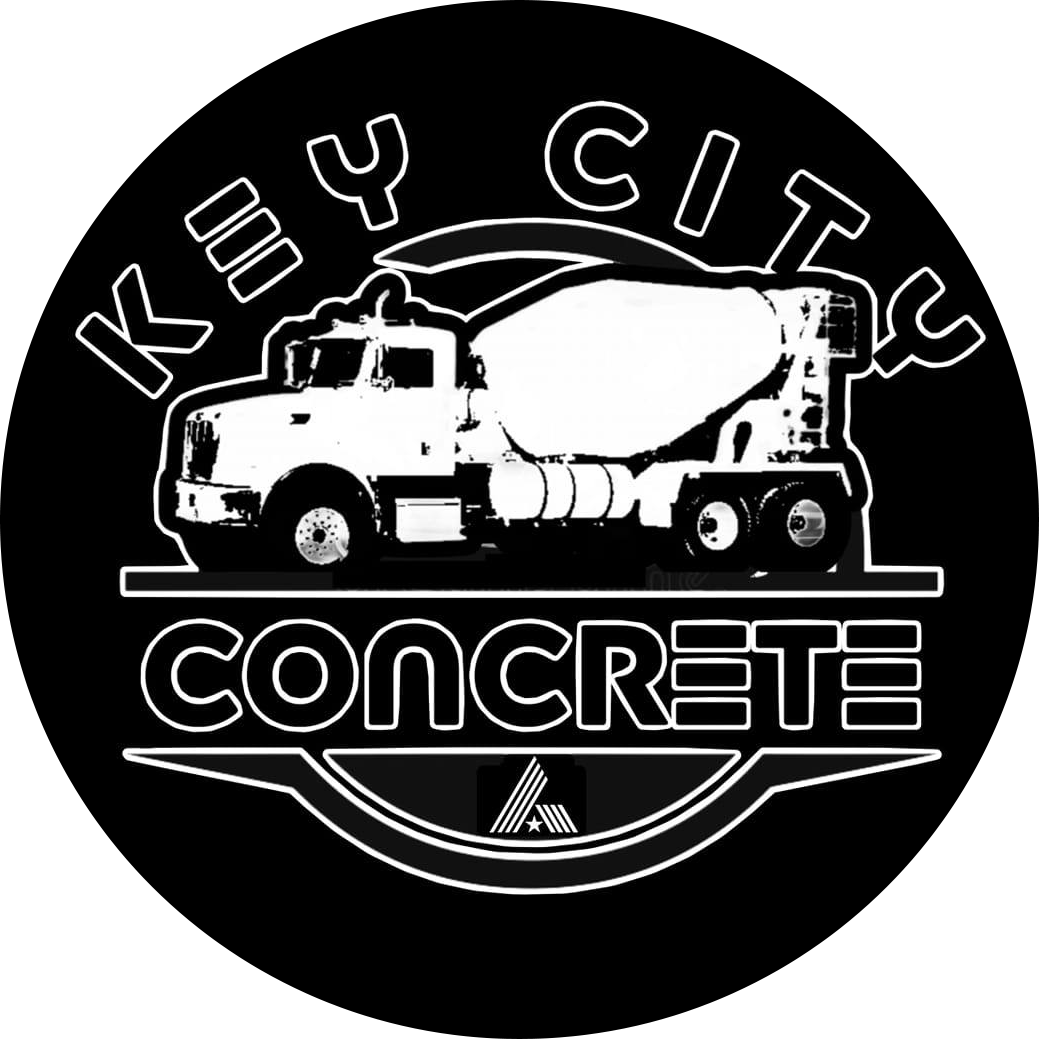Reduce Cracks & Settling with High-Quality Concrete Slabs
Concrete is strong, but it’s not indestructible. Cracks and settling can occur due to poor soil preparation, excess water in the mix, heavy loads, or changing weather. A small crack might not seem like a big deal, but it can grow and weaken the slab over time. Settling can lead to uneven surfaces and structural issues.
With the right techniques, you can prevent these problems and avoid costly repairs.
Here’s what you need to know to keep your concrete strong and durable.
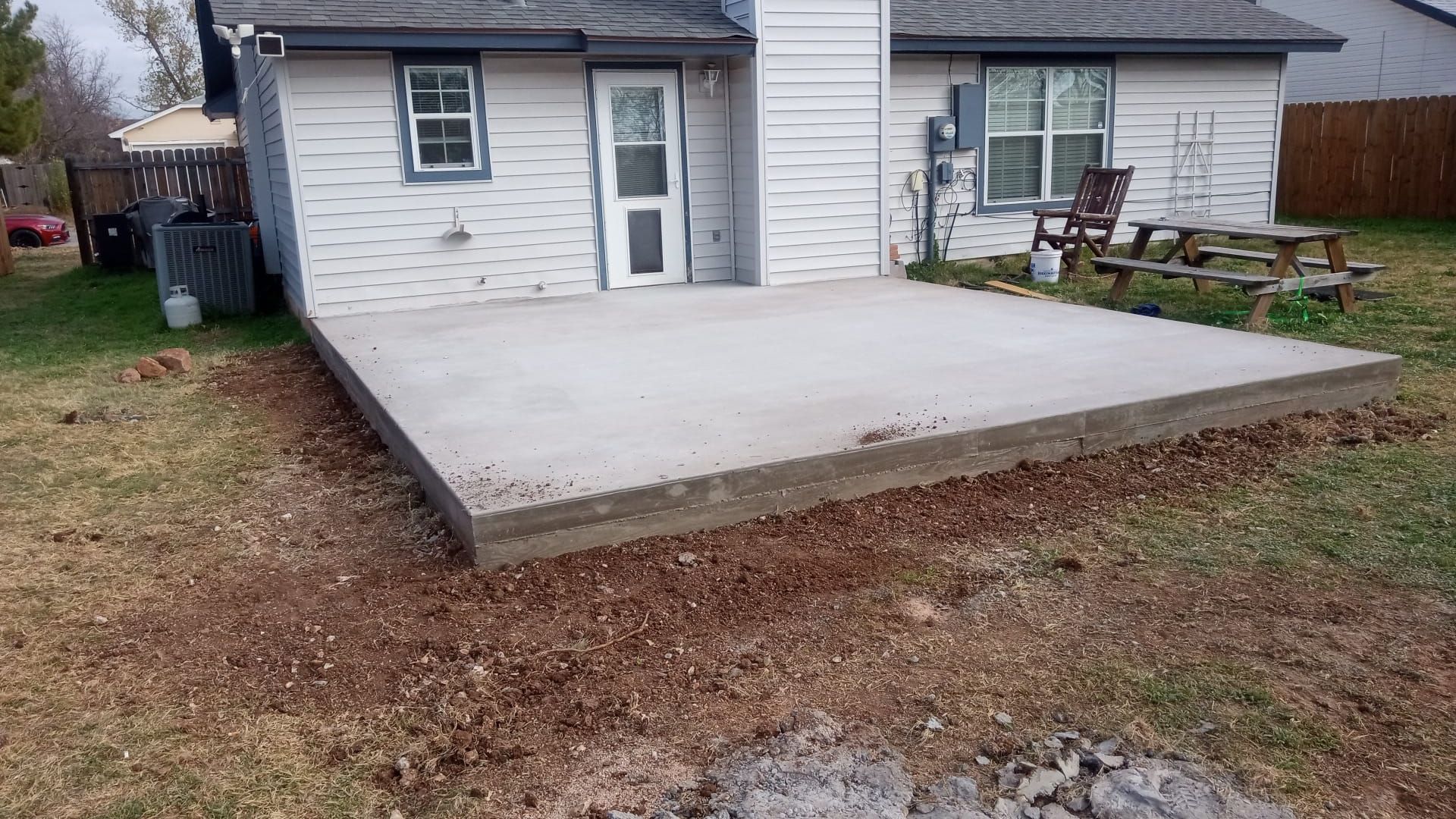
Why Does Concrete Crack and Settle?
Cracks and settling occur when the mix, base, or environmental factors aren’t properly managed.
Why Does Concrete Crack?
- Too much water in the mix weakens concrete, making it more prone to cracking.
- Rapid drying causes the surface to shrink quickly, leaving cracks behind.
- Excess weight from vehicles, furniture, or machinery can stress the slab.
- Weather changes, including expansion in heat, shrinking in cold, and repeated freezing and thawing, can cause cracking.
- Poor installation from rushing the job or skipping steps results in weak spots.
Why Does Concrete Settle?
- Improperly compacted soil allows the slab to sink over time.
- Water erosion from poor drainage can wash away soil, leaving gaps under the slab.
- Expanding and shrinking soil, especially clay-heavy soil, swells when wet and shrinks when dry, shifting the slab.
Residential vs. Commercial Concrete Slabs: What You Need to Know
Concrete slabs are essential for both homes and businesses, but they serve different purposes and require different levels of strength and reinforcement.
Residential Concrete Slabs
Residential slabs are commonly used for patios, driveways, sidewalks, garages, and house foundations. Key considerations include:
- Thickness requirements: Typically 4 inches for patios and sidewalks, 5-6 inches for driveways and garages.
- Aesthetic options: Stamped, stained, or polished concrete can enhance the look of outdoor and indoor spaces.
- Reinforcement: While some residential slabs can be poured without reinforcement, using rebar or wire mesh increases durability and prevents cracking.
Commercial Concrete Slabs
Commercial concrete must handle heavier loads, larger surfaces, and higher foot traffic. These slabs are used in warehouses, office buildings, parking lots, industrial facilities, and retail spaces. Key factors include:
- Stronger mix design: Higher PSI (pounds per square inch) concrete is used to handle heavy machinery, vehicles, and foot traffic.
- Thicker slabs: Commercial slabs often range from 6-12 inches thick, depending on the application.
- Reinforced construction: Rebar, post-tension cables, and fiber reinforcement help prevent cracking and support weight distribution.
The Benefits of Using High-Quality Concrete Slabs
Not all concrete is created equal. Investing in high-quality concrete slabs provides long-term advantages for both residential and commercial projects.
Increased Durability
High-quality slabs are designed to withstand heavy loads, extreme weather, and everyday wear without cracking or deteriorating quickly. This means fewer repairs and a longer lifespan for your concrete surfaces.
Better Resistance to Cracks and Settling
A well-made slab with a strong mix and proper reinforcement is less likely to develop cracks or settle unevenly over time. This helps maintain smooth, level surfaces for driveways, patios, sidewalks, and commercial floors.
Improved Structural Integrity
Reinforced high-quality concrete provides better support for buildings, parking lots, and industrial areas, ensuring stability and safety for years to come.
Low Maintenance and Cost Savings
Premium slabs require less maintenance, reducing the need for frequent sealing, patching, or repairs. While high-quality materials may cost more upfront, they save money in the long run by preventing major structural issues.
Enhanced Appearance Options
Higher-quality concrete allows for better finishing techniques, including staining, stamping, and polishing, giving your project a professional, long-lasting look.
How to Prevent Cracks in Concrete
Concrete is durable but only if installed correctly. If the mix is wrong, the base is weak, or it dries too fast, cracks will appear sooner than you’d like. Here’s how to prevent that.
Start with a Solid Base
A concrete slab is only as strong as the ground under it. A weak foundation leads to shifting and cracks.
- Compact the soil to prevent uneven settling.
- Add a stable base of gravel or sand to distribute weight and prevent sinking.
- Use a moisture barrier to stop water from softening the ground under the slab.
Get the Mix Right
The right concrete mix determines the strength of your slab.
- Less water makes stronger concrete, while too much water leads to shrinkage cracks.
- Avoid last-minute water additions that weaken the mix.
- Use a high-strength concrete mix designed for durability in both residential and commercial applications.
- Reinforce with wire mesh or rebar to increase durability.
Protect It from Wind and Sun
Concrete that dries too fast develops surface cracks.
- Use wind barriers to slow drying time.
- Spray anti-evaporation products to retain moisture and prevent surface cracks.
Let It Cure Properly
Concrete needs time to reach full strength.
- Keep it damp by spraying water on the surface for at least a week.
- Be patient, as the first 7-10 days are critical for curing.
- Avoid extreme temperatures that can cause early cracking.
Reinforce for Extra Strength
Even strong concrete benefits from reinforcement.
- Rebar or wire mesh helps hold the slab together and prevents shifting.
Control Where It Cracks
Concrete will crack—it’s inevitable, but you can control where it happens.
- Use control joints to allow for expansion and contraction without random cracks.
- Proper spacing ensures that joints are deep enough to be effective.
Taking the time to do it right ensures a long-lasting, crack-resistant slab.
How to Prevent Concrete from Settling
Concrete settles when the foundation isn’t properly prepared. Here’s how to stop it before it starts.
Compact the Soil
Loose ground creates weak spots under the slab.
- Use a compactor to press the soil down before pouring.
- Add gravel or crushed stone if the soil is too soft.
Improve Drainage
Water is the enemy of a stable foundation.
- Install proper drainage with gutters, drains, or a slight slope to direct water away.
- Fix grading issues to prevent standing water from pooling under the slab.
Use the Right Thickness
A thin slab is more likely to crack and sink.
Patios and sidewalks should be at least 4 inches thick.
Driveways and garages should be 5-6 inches thick for heavy loads.
Heavy-use areas need an even thicker slab for long-term durability.
Reinforce with Steel
- Rebar or wire mesh adds extra strength to prevent shifting and cracking.
Preventing settling early saves you from major headaches later.
Maintaining Your Concrete Slab
Concrete slabs are low maintenance but not maintenance-free. A little effort extends their lifespan.
- Seal it every 1-2 years to protect against moisture and stains.
- Repair small cracks early before they grow into major problems.
- Watch for sinking spots and address uneven surfaces before they worsen.
Why Hiring a Good Contractor Matters
A concrete slab needs to be done right, or it won’t last. Experienced contractors:
- Use high-quality concrete slabs that offer better strength, durability, and resistance to cracking.
- Select the right mix and techniques to ensure long-term performance.
- Ensure proper soil preparation to prevent settling.
- Follow correct curing and reinforcement methods for added strength.
Cheap materials and rushed work lead to expensive repairs. Investing in a skilled contractor and high-quality materials may cost more upfront but prevents costly issues down the road.
Frequently Asked Questions
How to Protect a Concrete Slab?
A clear sealer protects concrete from moisture and stains while keeping its natural look.
How to Prevent Cracks in Concrete
Seal joints to keep water out. Let the concrete cure properly to make it stronger and less likely to crack.
How to Fix a Settling Concrete Slab?
If the slab is badly cracked, replacing it may be best. If it’s sinking but still solid, lifting methods like mud jacking or foam injection can help.
What Helps Reduce Cracks in a Concrete Slab?
Using the right concrete mix, curing it properly, and adding shrinkage-reducing additives can help prevent cracks.
What’s the Best Treatment for a Concrete Slab?
Epoxy, polyurethane, and polyaspartic coatings protect concrete from damage. Acrylic sealers are a simple, budget-friendly option.
How to Make a Concrete Slab Stronger?
Rebar reinforcement adds support and helps the slab handle more weight without cracking.
Get Reliable, Long-Lasting Concrete with Key City Concrete
Cracks and settling can be avoided with proper soil preparation, reinforcement, and curing. A well-built concrete slab stays strong for years, making quality materials and expert installation essential for any project.
Key City Concrete specializes in durable, long-lasting slabs for residential and commercial use. For a solid foundation in Abilene, Texas.
Contact us today
for a free quote and expert guidance.
